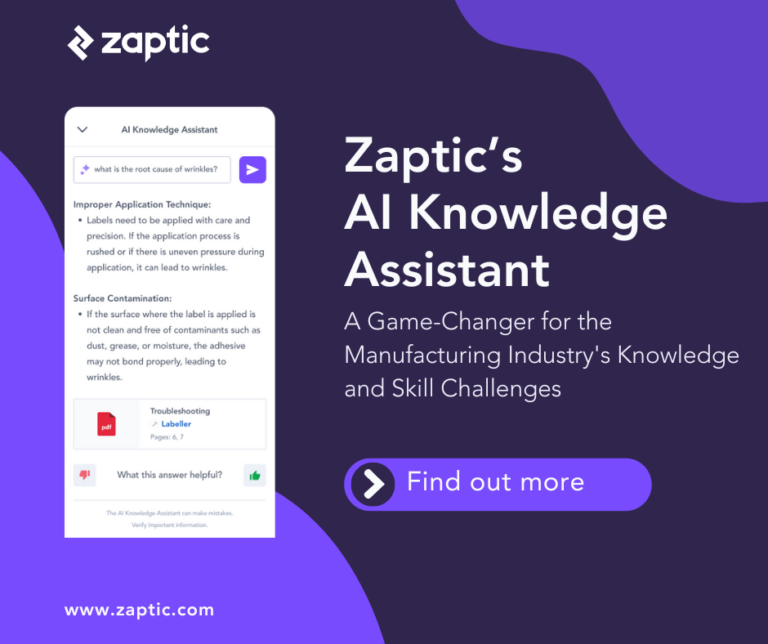
Whether you prefer the term ‘industrial internet of things’, or industry 4.0, either way the rise of connected enterprises is changing the way all types of business operations can be monitored.
Digital capabilities such as image recognition, smart sensors, predictive and prescriptive analytics are changing the game:
from the old standard of preventive maintenance and post hoc auditing in order to measure compliance and productivity, to a real- time or even proactive approach.
We predict a revolution in the monitoring of business operations bringing about smarter operational checklists. The smart checklists of the connected enterprise that we see in our crystal ball hold the potential to transform preventive maintenance from:
Merely ticking boxes on a piece of paper or a mobile device screen
to
Using multiple systems and digital capabilities – from smart sensors to image recognition to collect data; using predictive and prescriptive analytics to send real-time alerts and reminders to workers on the ground; guiding workers through the standard operating procedures to ensure continuous compliance.
When all these functionalities are integrated in one mobile, user-friendly interface, smart checklists can help to:
 drive efficiency and productivity in the field
drive efficiency and productivity in the field
 pre-empt losses and non-compliance
pre-empt losses and non-compliance
 facilitate communication between the head office and deskless workers
facilitate communication between the head office and deskless workers
 enhance training and employee engagement.
enhance training and employee engagement.
Let’s take a closer look at each of those benefits of smart checklists in greater detail.
Greater efficiency and productivity
With digital capabilities like image recognition and smart sensors, smart checklists help to automate low value adding tasks and improve workers’ productivity and effectiveness in acting on high value adding opportunities. In the instance of in-store execution, image recognition technology enables store associates to check planogram compliance by taking a picture of the shelves instead of spending hours manually checking each SKU. The image is then digitally analysed and within minutes store associates receive a report on KPIs like missing and present SKUs, price checks and share of shelf, saving time and increasing audit accuracy.
Similarly, smart sensors – devices which take input from the physical environment, process the data and communicate it with other connected devices – can significantly improve compliance by performing regular checks with greater accuracy and time-efficiency. In a QSR’s kitchen, for example, a sensor can measure and record fridge temperature on an hourly basis and send a real-time alert to associates’ mobile devices if it identifies any deviation from the official standards. This way, frontline workers only need to act upon alerts and do not need to waste time and effort on manual temperature checks.
Dynamic communication
With smart checklists, the data collected is analysed in real-time. This helps to anticipate trends and risks and to communicate to the deskless workforce the required actions to pre-empt losses and non-compliance. Predictive analytics help to identify patterns in the data and apply statistical models and algorithms to capture relationships between various data sets. In retail, predictive analytics can use the data collected in-store along with data from POS and inventory systems to identify the next time an out of stock will occur. Store associates are then pushed a data-driven re-stock alert on their mobile devices before the anticipated stock out so they can prevent lost sales.
Prescriptive analytics help to evaluate the effect of future decisions and advise on possible outcomes before the decisions are actually made. Prescriptive analytics use tools such as business rules, algorithms, machine learning and computational modelling procedures, applied against input from many different data sets, to recommend one or more possible courses of action. Retailers can use prescriptive analytics to optimise inventory levels and make sure that the right products are stocked in the right quantities [1].
Smart checklists also enable the head office to prompt immediate action on urgent tasks. For example, the branch manager of a fast food restaurant can send an alert to the mobile devices of workers to immediately recall all chicken products under suspicion of food contamination, minimising health risks for customers.
Real-time visibility
All data captured in the field is date and time stamped and stored in the cloud where it can be accessed anytime, anywhere, providing managers in the head office with real-time visibility over deskless workers’ productivity, location and task at hand. This way managers can optimally delegate tasks so no worker on the ground is left with too much or too little to do.
The data recorded also helps to create a consistent track record of compliance, serving as proof to external regulatory bodies and helping to obtain earned recognition – a reduction in the frequency of external inspections.
Upskill and reward at the point of action
Smart checklists are interactive, providing workers in the field with procedural guidance at the point of action in an easy-to-follow format like a video or a slide deck. This way, the restaurant worker does not only receive a daily kitchen clean reminder but is also guided through each step of the process – a step-by-step video explains the type of detergent, proportion to water, water temperature, cleaning utensils etc. required to perform the task. Smart checklists also enable gamification which rewards points for consistent reporting and implementation of corrective actions, driving engagement and incentivising correct behaviours.
Transform the way you monitor productivity and compliance with Zaptic
{{cta(‘7578877f-b4fe-4593-b240-fc487399dfc5′,’justifycenter’)}}
Resources:
[1] https://halobi.com/2016/07/descriptive-predictive-and-prescriptive-analytics-explained/











